With over 20-years experience in the short film world, there aren’t many who can boast a knowledge of the industry comparable to that of the Argentinian-born founder of Autour de Minuit – Nicolas Schmerkin. With an impressive list of awards to the company’s name – including an Oscar and multiple César’s – they’ve been involved with some standout short films and have even branched out into the worlds of television and features.
Eager to unravel some of this expertise the short film multi-hyphenate joins us to discuss his work with Autour de Minuit, how the short film industry has changed over the last 20+ years and what represents success for their films.
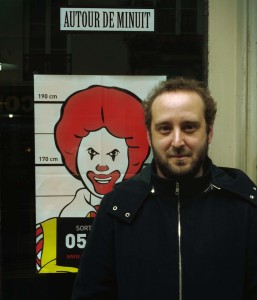 For those who are unfamiliar with the work of Autour, can you introduce the role you play in the short film arena?
For those who are unfamiliar with the work of Autour, can you introduce the role you play in the short film arena?
I launched Autour de Minuit in 2001, starting, at first, with some work I directed (short documentaries for TV, DVD extras) and working on production and distribution with live action producer Philippe Bober (Roy Andersson, Jessica Hausner & Ruben Ostlund’s coproducer and sales agent). I soon started to create and handle distribution for his short film catalogue, including some animations. I started using the company to produce films for others in 2003, with the short experimental animation Obras by Hendrick Dusollier, which was completed in 2004.
At the same time, I started a distribution department within the company with a few animated film in the catalogue (including the world hit Fast Film by Virgil Widrich) and then distributed our productions, along with films from other companies, which fitted the company editorial policy: irreverent, crazy, political and / or sexy films. These shorts were mainly made with what was then considered “new technologies” (CGI films, motion design, often combining many techniques, starting among the first hybrid films in France), with artists that came from music videos, advertising or art studies – not cinema or animation studies – and who had crazy visions and new ideas of storytelling.
Very soon we started an animation studio (first in Paris, then in Angoulême too) to create our own images and to be able to build a complete ecosystem where we could handle the development, financing, production, animation and distribution of the films. Often coproducing with European or extra European countries.
At this time, we were among the first in France to produce CGI and hybrid films, and the first in the industry to build a plan, including production & distribution, for crazy arthouse short film productions. We created a sort of label as well as a business model, which later inspired some other French studios. We have also been pioneers in France and Europe of using the open source software Blender since 2009, first in CGI with the short and series Babioles, then also for 2D and hybrid films with the short Ronde de nuit (The Night Watch) in 2020 and the feature film Unicorn Wars.
A History of Autour De Minuit in 10 Short Films
View the Collection on Shortverse / View Nicolas Schmerkin’s profile on Shortverse
So far we have produced around 100 shorts, 5 series, 7 TV specials and 2 feature films, mostly for young adults and adults but also some projects for kids. We are constantly handling 20/25 projects at different stages from development to post-production. We have a distribution catalogue with around 400 titles, from short films to TV specials and miniseries or collections.
After 20 years, Autour de Minuit is still today among the top production companies and regularly selected and awarded for its productions (the most prestigious being the Oscar for Logorama in 2010) and its distribution work (Unifrance distribution award 2015, 2019, 2021 and 2023).
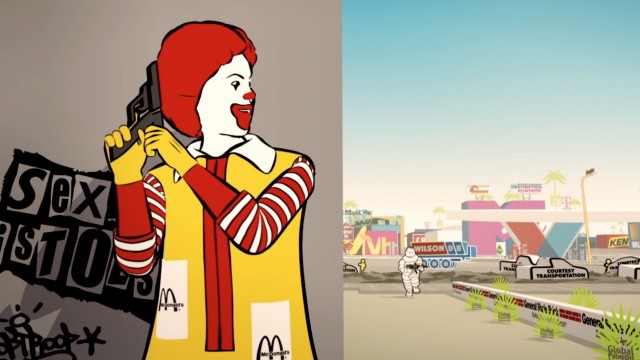
Logorama won the Oscar for Best Animated Short at the 82nd Academy Awards (2010)
You started the company back in 2001, how do you think the world of short film has changed over this time?
It has changed tremendously. At the time we were among the very first companies producing CGI shorts, most of the CGI shorts were student films done in animation schools like Supinfocom. In general, there were very few production companies producing short and feature animation, and almost none producing experimental films. Today the number of animation companies, schools, projects has been multiplied by 4 or 5, which is good. What is complicated though, is that there is not more money now to produce these short animations, than there was in 2001.
“The number films (and their quality) has exploded, but the market has shrunk enormously”
Production costs have gone crazy, and in terms of distribution, we could sell, at the time, our crazy shorts to some 15 TV channels around the world, when today there are barely 2 or 3 TV buyers left for our programs. The number films (and their quality) has exploded, but the market has shrunk enormously. Streaming appeared, but it hasn’t replaced the TV revenues in the very fragile economy of short films. In the 2000’s we could take risks investing from our pocket in a short project, knowing that we could recoup it later with the distribution if the film does well. Today it’s impossible.
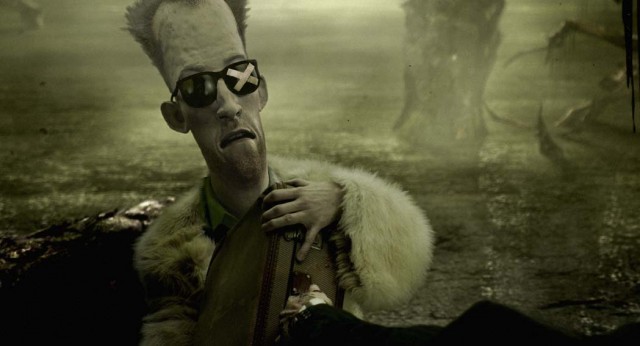
The work of late Dutch filmmaker Rosto is a proud part of the Autour De Minuit distribution catalogue.
As producers and distributors, what is it that attracts you to a short film? What are the qualities you look for?
I’m very lazy, so I first look at the visuals and in general if I don’t like the style, I’m not very excited to read the script or see the film in its entirety. I need to be attracted by the art direction first, and then it needs to have a good story, rhythm, and content. I’m also very attracted by impertinent and irreverent content, whether it’s social, political or comedic, but something that’s steps out of the ordinary and has original storytelling that says something about us. The best way to understand what I like in films is to watch our shorts! (most of them are visible for free in our YouTube channel, Animatic), especially the films by Nieto, Alberto Vázquez, Donato Sansone, Mathieu Auvray, H5, Patar & Aubier, or the late Rosto.
How do you go about discovering the short films that Autour represents?
If you mean how we discover the films we acquire? Then at the beginning it was about watching a lot of films in festivals, especially Clermont-Ferrand and Annecy, but now we receive a lot of propositions, for production and distribution. But off course, we still keep watching a lot of finished films in festivals, and we also attend pitches in Annecy, or other festivals, to get involved earlier in the production process, even if it’s only for distribution.
What do you do to create opportunities for the filmmakers that you work with?
We care about each film as a prototype, and set up the production context adapted to each film and each filmmaker, so they have the best conditions to create their art. Most of the time we work with the filmmakers who have already worked on a project with us, as they come to us with a new idea. However, I also read a lot of graphic novels and illustrated books, and go to book fairs, and we often put an option on a book or graphic novel that we then suggest to a filmmaker to adapt. Short filmmakers can be interested in only going on with new short films, or they may want to try to make a series or their first feature film, so we try to accompany them with their first steps into this new area.
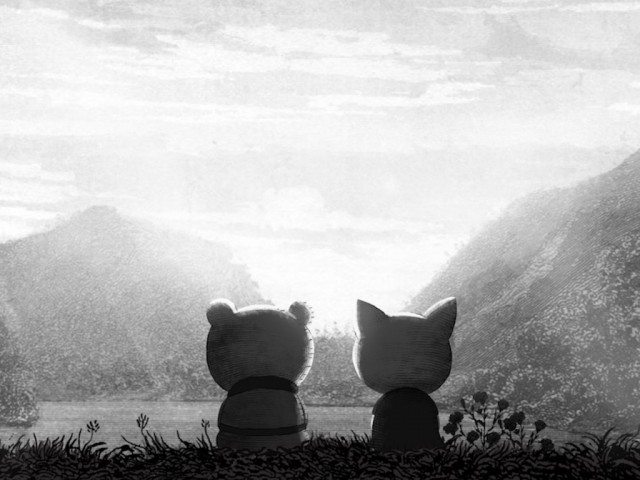
Alberto Vázquez’s Decorado won Autour a Goya Award in 2017
Your films have won Oscars, Césars and many other awards, but how do you personally measure the success of an Autour de Minuit short film?
We had the chance to win some prestigious awards, from an Oscar to a César, but we’ve also won a Goya (for Decorado), Magritte and Cartoon d’Or (for A Town Called Panic: A Christmas Log), but it has become very difficult now there is a bigger competition, with more and more companies producing animation and making good films! The selection is very tough, and we are happy now when our films are selected in prestigious generalist or specialized festivals.
“We’re happy when a short film meets its audience”
Winning an important award is an extra, which happens more and more rarely. So, we’re happy when a short film meets its audience, is selected in several festivals, and wins some awards. We’re also happy when we manage to sell it to a TV channel that didn’t used to buy our shorts anymore, or if it does well in our YouTube Channel Animatic – where we put the film online, for free, once it has finished its festival tour and explored all sales possibilities.
Looking at all your experience in the short film industry and thinking about what makes a good short, if you had one piece of advice for an emerging filmmaker what would it be?
Each film should have its own creative and production process, and I feel it’s better to have a prototype and be original than try to imitate what seems to work on festivals. On a very pragmatic level, shorts films under 15’ are easier to produce and distribute, but each film should have the duration it needs.
“Find the right creative team and the right producer as a partner”
The most important thing is to find the right creative team and the right producer as a partner. Maybe the first thing is to hang out with your producer, have some drinks and talk, see if you’re ok to spend two or three years of your life (sometimes more!) on working together every day on a project!
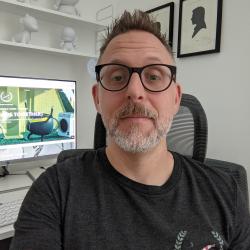 Rob Munday
Rob Munday